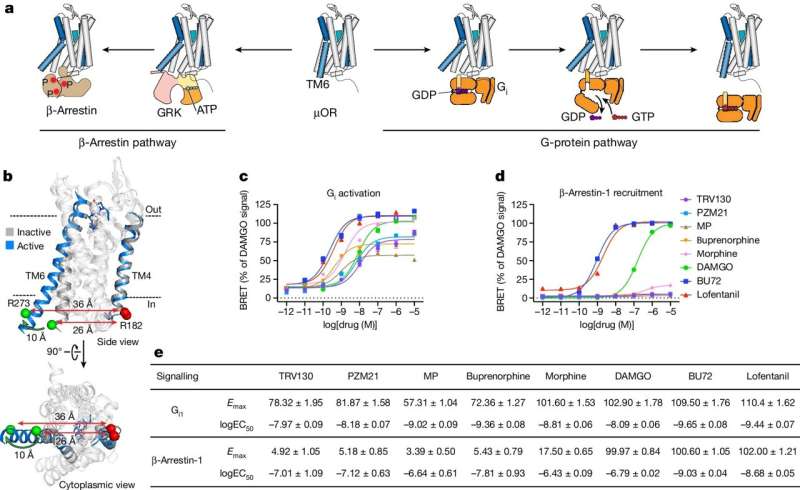This article has been reviewed according to Science X's editorial process and policies. Editors have highlighted the following attributes while ensuring the content's credibility:
fact-checked
peer-reviewed publication
trusted source
proofread
Researchers shed light on the molecular causes of different functions of opioid receptors

Thousands of people around the world die every day from overdoses involving opioids such as fentanyl. Drugs that target opioid receptors sometimes have severe side effects. An international team of researchers has taken a closer look at the molecular mechanisms of these active substances. The research, carried out by Dr Matthias Elgeti, a biophysicist at Leipzig University, in collaboration with research groups from the US and China, has now been published in the journal Nature.
Opioid receptors are of great pharmacological interest because opioid substances regulate the perception of pain. "Our findings provide insights into how an opioid receptor can perform different functions. It is able to reduce pain, but also to regulate digestion or breathing," explains Dr. Elgeti, co-first author of the study from the Institute for Drug Discovery at the Faculty of Medicine.
In the current study, the biophysicist collaborated with international scientists, including the research group of Nobel laureate Brian Kobilka from Stanford University. They discovered that superagonists, such as fentanyl, stabilize a state of the receptor that causes particularly effective and long-lasting signal transmission. This means that superagonists are particularly potent and, therefore, dangerous. In the current study, the researchers used electron spin resonance and single-molecule fluorescence spectroscopy to determine different states of the opioid receptor and the structural effects of different binding partners.
Opioid receptors are members of the large family of G protein-coupled receptors (GPCRs), which control many signaling processes in the body, such as taste and smell, while others bind neurotransmitters and hormones or are activated by light. Understanding the molecular interactions of these receptors with drugs and other signaling proteins is very important for drug development. As all GPCRs are structurally very similar, the researchers hope that their findings on the opioid receptor can be applied to other receptors.
"This study involved isolating the opioid receptors. They are normally found in the body's cells, interacting with many other proteins and molecules. Further research into the molecular interactions is therefore needed to gain a full understanding of the regulatory mechanisms," says Dr. Elgeti. The new study is an important building block in basic research, with further studies needed to develop better and safer medicines.
More information: Jiawei Zhao et al, Ligand efficacy modulates conformational dynamics of the µ-opioid receptor, Nature (2024). DOI: 10.1038/s41586-024-07295-2





















